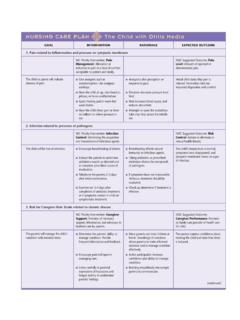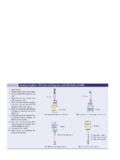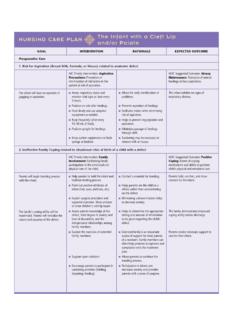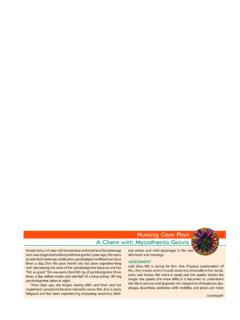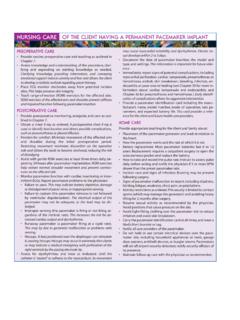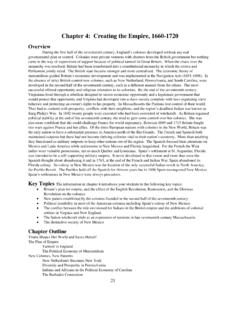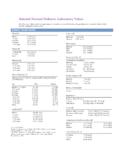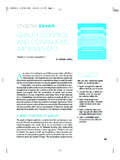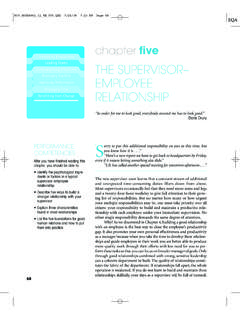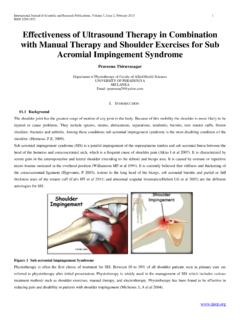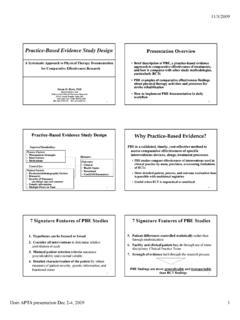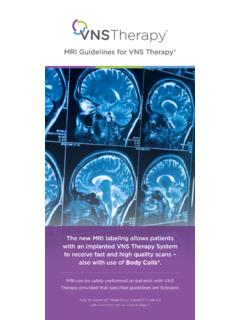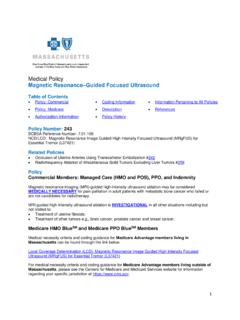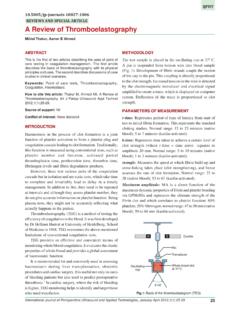Transcription of NURSING CARE OF THE CLIENT WITH A T-TUBE
1 CHAPTER 22 / NURSING care of clients with Gallbladder, Liver, and Pancreatic Disorders577 Stump ofcystic ductTo biledrainage bagT tubeFigure 22 2 T-TUBE placement in the common bile duct. Bilefluid flows with gravity into a drainage collection device below thelevel of the common bile is obese. If bile flow is obstructed, fat-soluble vitamins(A, D, E, and K) and bile salts may need to be TherapiesIn some cases, shock wave lithotripsy may be used with drugtherapy to dissolve large gallstones. In extracorporeal shockwave lithotripsy (ESWL),ultrasound is used to align the stoneswith the source of shock waves and the computerizedlithotripter. Positioning is of prime importance throughout theprocedure, which usually takes an hour. Mild sedation may begiven during the procedure. Postprocedure NURSING care in-cludes monitoring for biliary colic that may result from thegallbladder contracting to remove stone fragments, nausea, andtransient hematuria.
2 Percutaneous cholecystostomy,ultrasound-guided drainage of the gallbladder, may be done in high-riskclients to postpone or even eliminate the need for TherapiesThe herb goldenseal has been used in treating of the active ingredients in goldenseal, berberine, stimu-lates secretion of bile and bilirubin. It also inhibits the growthof many common pathogens, including those known to infectthe gallbladder. A study of the effectiveness of berberine inclients with cholecystitis demonstrated relief of all can stimulate the uterus, so it is contraindicated foruse during pregnancy. It also should not be used by CareHealth PromotionWhile most risk factors for cholelithiasis cannot be controlledor modified, several can. Modifiable risk factors includeobestity, hyperlipidemia, extreme low-calorie diets, and dietshigh in cholesterol.
3 Encourage clients who are obese to in-crease their activity level and follow a low-carbohydrate, low-fat, low-cholesterol diet to promote weight loss and reducetheir risk for developing gallstones. Discuss the dangers of yo-yo dieting, with cycles of weight loss followed by weightgain, and of extremely low calorie diets. Encourage clientswith high serum cholesterol levels to discuss using cholesterol-lowering drugs with their primary care data related to cholelithiasis and cholecystitis in-clude the following: Health history: current manifestations, including RUQ pain,its character and relationship to meals, duration, and radia-tion, nausea and vomiting or other symptoms; duration ofsymptoms; risk factors or previous history of symptoms;chronic diseases such as diabetes, cirrhosis, or inflammatorybowel disease; current diet; use of oral contraceptives or pos-sibility of pregnancy Physical assessment: current weight; color of skin andsclera; abdominal assessment including light palpation fortenderness.
4 Color of urine and stoolNURSING CAREOF THE CLIENT with A T-TUBE Ensure that the T-TUBE is properly connected to a sterile con-tainer; keep the tube below the level of the surgical position promotes the flow of bile and prevents backflow orseepage of caustic bile onto the skin. The tube itself decreases bil-iary tree pressure. Monitor drainage from the T-TUBE for color and consistency;record as output. Normally, the tube may drain up to 500 mLin the first 24 hours after surgery; drainage decreases to lessthan 200 mL in 2 to 3 days, and is minimal thereafter. Drainagemay be blood tinged initially, changing to green-brown. Re-port excessive drainage immediately (after 48 hours, drainagegreater than 500 mL is considered excessive).Stones or edemaand inflammation can obstruct ducts below the tube, requiringtreatment.
5 Place in Fowler s promotes gravity drainage ofbile. Assess skin for bile leakage during dressing irri-tates the skin: it may be necessary to apply skin protection withkaraya or another barrier product. Teach CLIENT how to manage the tube when turning, ambulat-ing, and performing activities of daily pulling ortraction on the tube must be avoided. If indicated, teach care of the T-TUBE , how to clamp it, andsigns of may be discharged home with the tubein place. Reporting early signs of infection facilitates prompttreatment.

